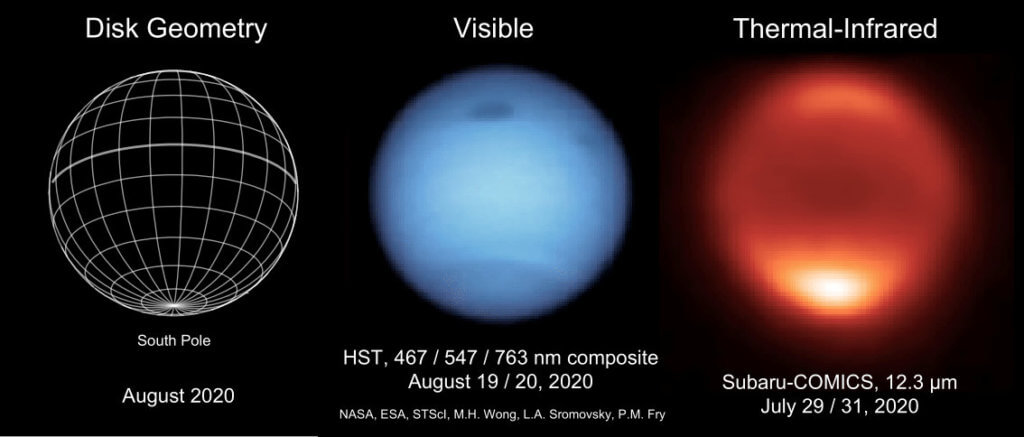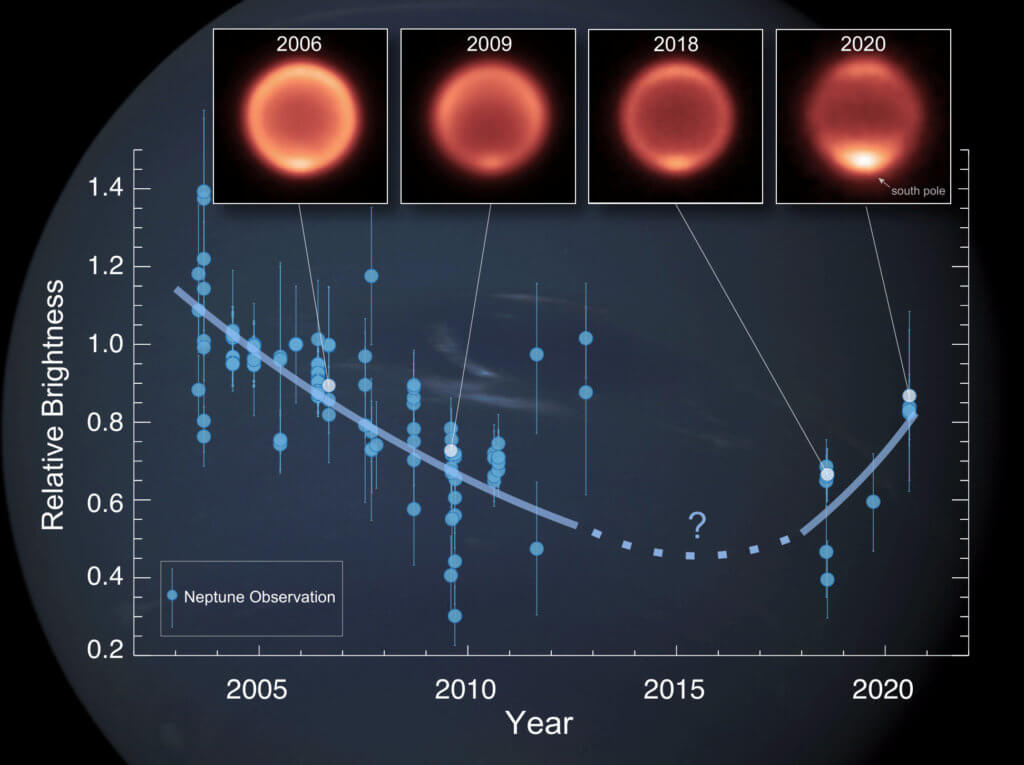
‘No one was expecting to see large and rapid changes.’
LEICESTER, United Kingdom — What’s going on with Neptune? That’s the question astronomers have after discovering startling temperature changes taking place on the giant icy planet.
Temperatures in the planet’s stratosphere dropped by roughly 14 degrees Fahrenheit between 2003 and 2018. The solar system’s outermost planet (aside from Pluto) is over 30 times as far from the Sun as Earth.
“This change was unexpected,” says lead author Dr. Michael Roman from the University of Leicester in a media release. “Since we have been observing Neptune during its early southern summer, we expected temperatures to be slowly growing warmer, not colder.”
The distant world is invisible to the naked eye, setting it apart from Mercury, Venus, Mars, Jupiter, Saturn, and Uranus. The new study reveals temperatures in its atmosphere have unexpectedly fluctuated over the past two decades.
The international team used observations from ground and space-based telescopes in thermal-infrared wavelengths beyond the visible light spectrum. By analyzing the data, they were able to reveal a more complete picture of temperature trends than ever before.

Is this just a seasonal change?
The scans showed a decline in brightness, indicating a decline in global average temperatures in the second layer of atmosphere as you go upward. Neptune experiences seasons just like Earth thanks to its axial tilt. However, it takes over 165 years to complete an orbit around the Sun. Therefore, a season on Neptune lasts more than 40 years.
“Our data cover less than half of a Neptune season, so no one was expecting to see large and rapid changes,” says co-author Dr. Glenn Orton from the Jet Propulsion Laboratory in California.
Despite these expectations, at Neptune’s southern pole, the stratosphere warmed by roughly 20 degrees between 2018 and 2020 — reversing the previous trend. Scientists have never observed such a warming trend on the planet before. The mysterious results challenge scientists’ understanding of Neptune’s atmospheric variability.
Dr. Roman theorizes that the temperature variations may be related to seasonal changes in Neptune’s atmospheric chemistry. This can alter how effectively the atmosphere cools. However, random variability in weather patterns or even a response to the 11-year solar activity cycle may be the cause.
“I think Neptune is itself very intriguing to many of us because we still know so little about it,” says Roman. “This all points towards a more complicated picture of Neptune’s atmosphere and how it changes with time.”

Does the Sun have something to do with it?
The 11-year solar cycle — which astronomers mark through the periodic variation in the Sun’s activity and sunspots — may also be responsible for changes in Neptune’s visible brightness. The new study suggests a link between the solar activity, stratospheric temperatures, and the number of bright clouds seen on Neptune.
Follow-up observations of the temperature and cloud patterns are still necessary to assess any possible connection in the years ahead. The James Webb Space Telescope (JWST) will observe both Neptune and Uranus later this year. Previous recording of Neptune find that the average temperature sits at around minus 353 degrees.
“I think Neptune is itself very intriguing to many of us because we still know so little about it,” Roman concludes. “This all points towards a more complicated picture of Neptune’s atmosphere and how it changes with time.”
The study is published in Planetary Science Journal.
South West news Service writer Jim Leffman contributed to this report.

